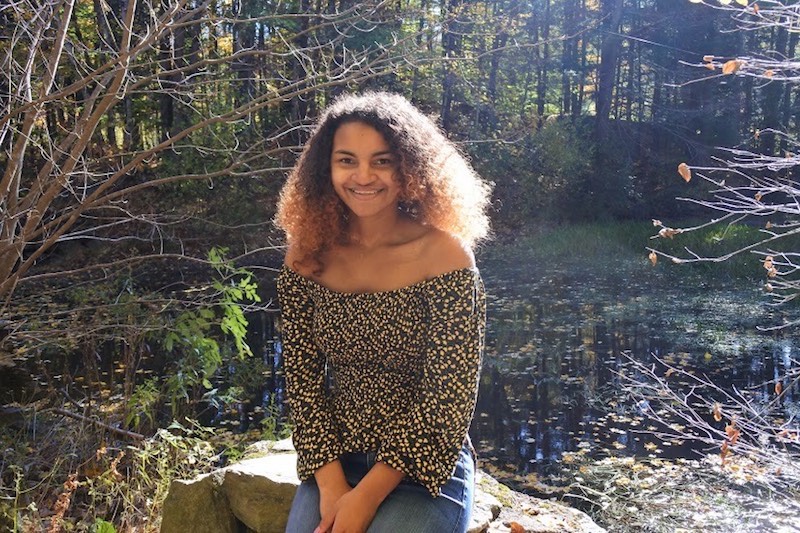From ICU patient to nursing student: Atiana’s heart journey

Atiana Lancaster was 13 and playing the last few games of lacrosse season in 2015 when she started having unusual — and worrying — symptoms.
“I had horrible headaches, tiredness, chest pain, and trouble breathing, so I had to keep going off the field when I was playing,” she says. “At the time, I thought it was my sports-induced asthma, so I didn’t think too much of it.
But over the next few days, it became clear it was something more serious. “On my last day of seventh grade, I could barely walk, and felt like an elephant was sitting on my chest,” she says. She went to her primary care doctor, who thought it might be indigestion and told her to stop eating spicy foods.
Two days later, her condition was so dire that her mother took her to the emergency room near their home in New Hampshire. Atiana remembers walking into an exam room. After that, the next few months are a blur.
Hear more about Atiana’s journey.
Cardiac arrest and airlift to Boston
“My mom tells me I went into cardiac arrest and was without oxygen for 75 minutes,” Atiana says. “Then I was airlifted to Boston Children’s Hospital.”
Atiana was immediately brought into the cardiac intensive care unit (CICU) and was placed on extracorporeal membrane oxygenation (ECMO), to allow her heart to recover from the trauma. ECMO temporarily takes over the work of the heart and lungs so they can heal.
“Atiana had multiple cardiac arrests due to an arrhythmia caused by myocarditis, an inflammation of the heart muscle,” says Dr. Ana Ubeda Tikkanen, a pediatric physiatrist who was part of Atiana’s rehabilitation team at Boston Children’s. “She also had a severe brain injury due to lack of oxygen during the arrests.” Her condition was so serious that her medical team wasn’t sure if she would ever recover her cognitive abilities, speech, and motor function.
“When I first started caring for Atiana, she didn’t seem to have any awareness of her surroundings and didn’t make any eye contact,” says Colleen O’Shaughnessy, one of Atiana’s nurses in the CICU.
But, despite the odds, every day she continued to improve. “I was so delighted when she was first able to come off of ECMO and then the ventilator,” says O’Shaughnessy. “These were huge achievements for her, and it gave me hope that she was turning around.”
Inner strength, teamwork, and family aid in recovery
While it was clear Atiana’s inner strength aided in her own recovery, Dr. Ubeda Tikkanen says she believes the expert medical support, team coordination, and early rehabilitation care Atiana received in the CICU also played a key role in her improvement. Members of Atiana’s care team included clinicians from a wide range of specialties, including intensivists, cardiology, cardiac surgery, electrophysiology, neurology, physical therapy, occupational therapy, feeding therapy, and augmentative communication.
“We worked together to provide an individualized rehabilitation program with medication and rehabilitation therapy in the acute hospital setting. We later continued to provide her with follow-up and support in the community and at school, to allow her to succeed from a functional perspective,” says Dr. Ubeda Tikkanen. “This type of coordinated care and early rehabilitation services for our complex cardiac patients is something that really sets us apart.”
The strength and support of Atiana’s family also played a role in her recovery.
“While she was in the hospital, we tried to celebrate Atiana as best as we could, filling her room with photos and playing the music she loves, even when she couldn’t respond,” says Atiana’s mom, Nicole Cifrino. “Every day, we made sure her room was a place of happiness. And so many people — the nurses, doctors, and child life specialists— supported us and made us feel welcome. Even though it was an incredibly difficult time for me, my experience at Boston Children’s was amazing.”
Moving on and making plans
After two months at Boston Children’s, Atiana was finally well enough to be transferred to Spaulding Rehabilitation Hospital, where she would begin the enormous task of how to re-learn the basic tasks of living. Her rehabilitation and medical team at Boston Children’s helped make the transition seamless and collaborated with the team at Spaulding to provide outstanding care.
“I was at Spaulding for four weeks, and had to learn how to do everything again, how to speak, walk, eat, tie my shoes, and do buttons and zippers,” says Atiana. “It was really, really hard work, but I was determined to get my life back and not be confined to a wheelchair.”
Her recovery has been a slow process, but Atiana has continually pushed herself forward, completing middle school and high school with honor-roll grades, even though she was often exhausted. She’s now a freshman at the University of Dallas and plans on completing her nursing education at Texas Woman’s University.
Inspired by her own nurses
“I’ve always wanted to do something in the medical field, and my experience solidified that desire,” she says. “At first I wanted to be a doctor, but now I want to be a certified nurse anesthetist.”
She says her nurses at Boston Children’s were a big inspiration. “The nurses picked me up when I was down, motivated me, and brought me happiness. That’s what I aspire to do for my patients when I’m a nurse.”
Learn more about the Heart Center.
Related Posts :
-

The brightest rainbow follows the darkest storm: Our PVS journey
Caroline is our rainbow baby, born after the loss of another child, the light and color arising after a storm ...
-

A complex repair for Ruby’s heart
When Rebecca and Michael Stewart learned their baby would be born with a congenital heart condition, they reacted as any ...
-

All in the family: Dynamic nursing duos in the Heart Center
Sometimes nursing runs in the family, and at the Boston Children’s Hospital Heart Center, we’re lucky to have ...
-

It's American Heart Month: Test your knowledge of congenital heart defects
Each year, about 1 percent of all babies are born with a congenital heart defect (CHD). This makes CHDs the most ...





